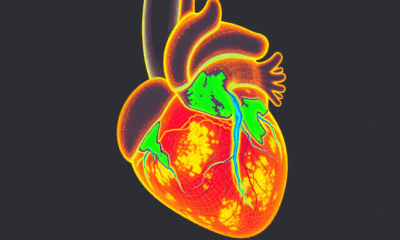While we try to keep things accurate, this content is part of an ongoing experiment and may not always be reliable.
Please double-check important details — we’re not responsible for how the information is used.
Diseases and Conditions
Reassessing How We Study Heat’s Impact on Heart Health
A new study reveals that encapsulated heating methods, an often-used heat simulation method, significantly increase heart rates and cardiac strain compared to natural heat exposure like those experienced during hot weathers. Understanding how extreme heat impacts heart function is crucial for developing effective strategies to protect vulnerable groups, especially as global temperatures continue to rise.

Alternative Medicine
A Sweet Solution: Benzaldehyde Shown to Halt Therapy-Resistant Pancreatic Cancer
A compound best known for giving almonds and apricots their aroma may be the key to defeating hard-to-kill cancer cells. Japanese researchers found that benzaldehyde can stop the shape-shifting ability of aggressive cancer cells, which lets them dodge treatments and spread. By targeting a specific protein interaction essential for cancer survival—without harming normal cells—benzaldehyde and its derivatives could form the basis of powerful new therapies, especially when combined with existing radiation or targeted treatments.
Alternative Medicine
A Breakthrough in Hearing Restoration: Single Gene Therapy Injection Restores Hearing Within Weeks
A cutting-edge gene therapy has significantly restored hearing in children and adults with congenital deafness, showing dramatic results just one month after a single injection. Researchers used a virus to deliver a healthy copy of the OTOF gene into the inner ear, improving auditory function across all ten participants in the study. The therapy worked best in young children but still benefited adults, with one 7-year-old girl regaining almost full hearing. Even more exciting: this is just the start, as scientists now aim to target other genes that cause more common forms of deafness.
Diseases and Conditions
Mapping Immunity: Breaking Down the Barriers to Pig-to-Human Transplants
Scientists have achieved an unprecedented look into how the human immune system attacks a transplanted pig kidney, using spatial molecular imaging to map immune activity down to the cellular level. They discovered early signs of rejection within 10 days and pinpointed key immune players—like macrophages—driving the response. Even more exciting: when targeted therapies were applied, the immune assault weakened. As U.S. clinical trials of pig kidney transplants begin, this breakthrough offers hope for overcoming the immune barrier that has long stood in the way of xenotransplantation.
-

 Detectors3 months ago
Detectors3 months agoA New Horizon for Vision: How Gold Nanoparticles May Restore People’s Sight
-

 Earth & Climate4 months ago
Earth & Climate4 months agoRetiring Abroad Can Be Lonely Business
-

 Cancer4 months ago
Cancer4 months agoRevolutionizing Quantum Communication: Direct Connections Between Multiple Processors
-

 Agriculture and Food4 months ago
Agriculture and Food4 months ago“A Sustainable Solution: Researchers Create Hybrid Cheese with 25% Pea Protein”
-

 Diseases and Conditions4 months ago
Diseases and Conditions4 months agoReducing Falls Among Elderly Women with Polypharmacy through Exercise Intervention
-

 Albert Einstein4 months ago
Albert Einstein4 months agoHarnessing Water Waves: A Breakthrough in Controlling Floating Objects
-

 Chemistry3 months ago
Chemistry3 months ago“Unveiling Hidden Patterns: A New Twist on Interference Phenomena”
-

 Earth & Climate3 months ago
Earth & Climate3 months agoHousehold Electricity Three Times More Expensive Than Upcoming ‘Eco-Friendly’ Aviation E-Fuels, Study Reveals





























